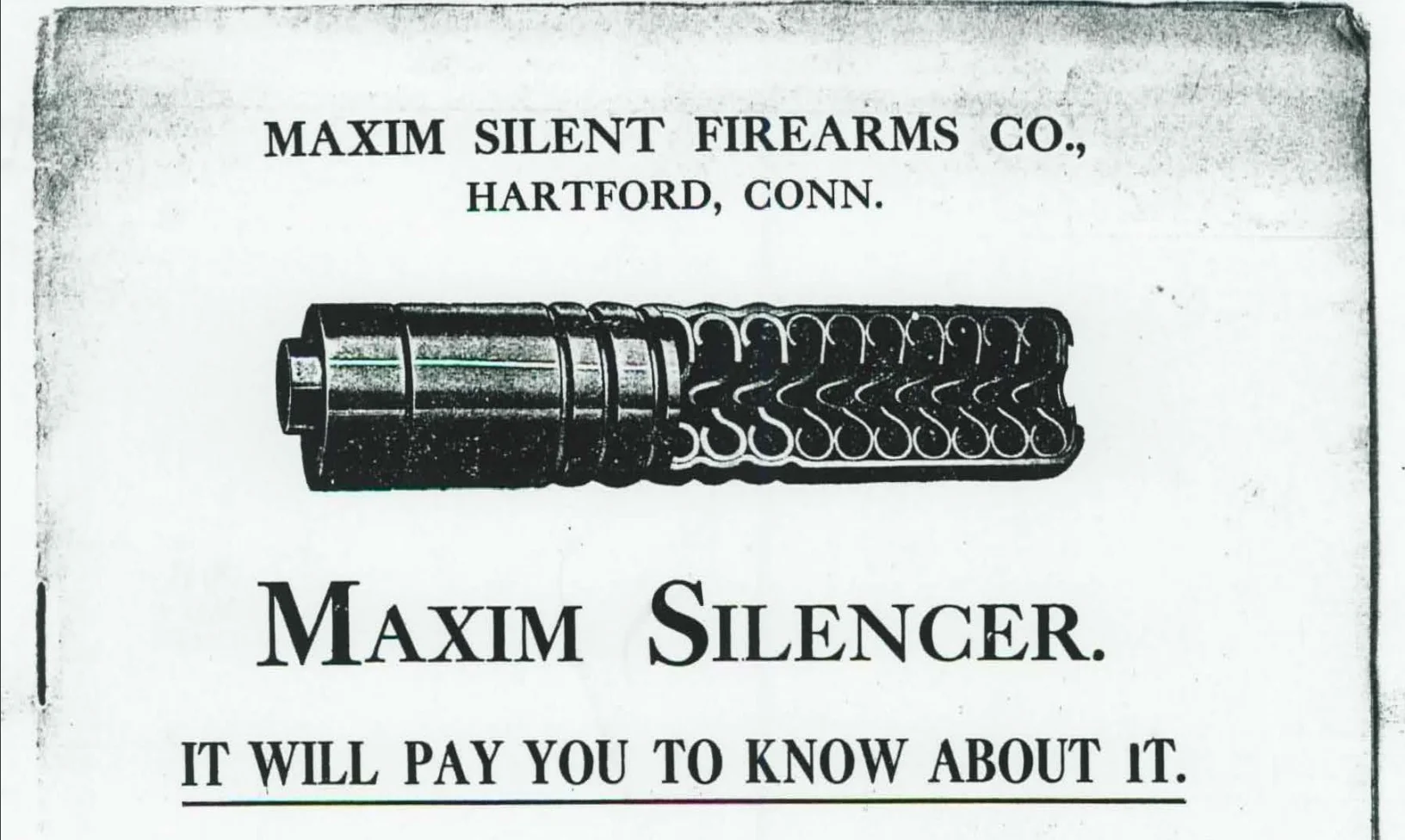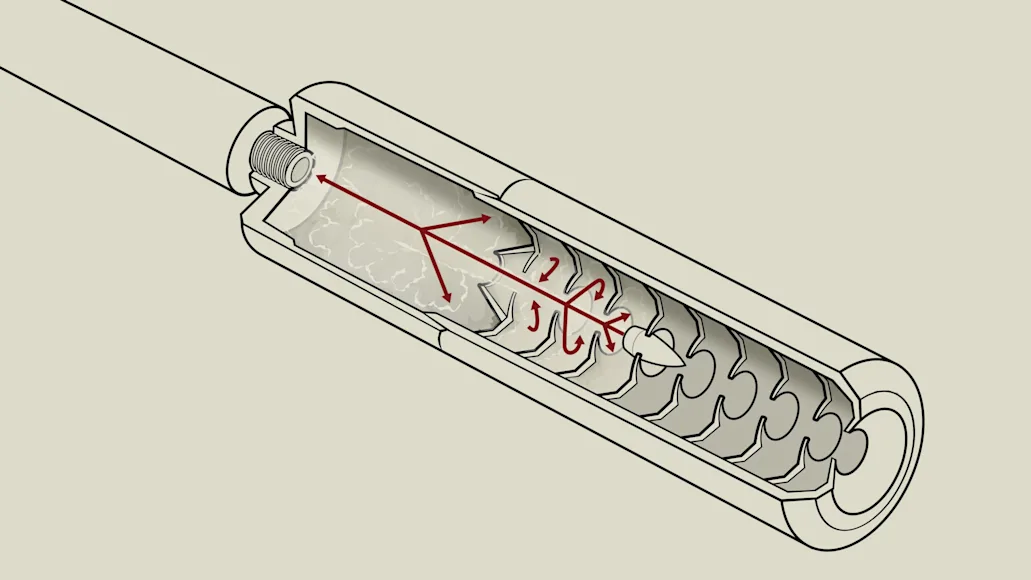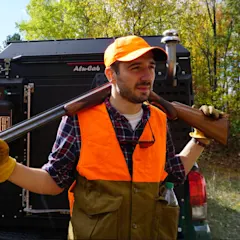We may earn revenue from the products available on this page and participate in affiliate programs. Learn more ›
Why are gunshots so loud? Gas. After the primer sets off a charge of gunpowder, gas rapidly expands inside the gun barrel, forcing the bullet out the muzzle. When the bullet comes out, so does all of that gas, and as it decompresses into the atmosphere it makes a loud BOOM. But, if you can contain the gasses, you’ll contain the sound. When thinking about how a silencer works, it’s best to think of the device as a trap for expanding gasses.
How Does a Silencer Work: Table of Contents
What is a silencer?
How does a silencer work?
How does a silencer work: subsonic vs. supersonic Ammunition
What is a silencer?
A silencer (a.k.a. suppressor) is a device that screws onto the muzzle of a gun barrel, designed to dampen the sound of a shot. There are silencers for handguns, rifles, and shotguns. Hiram Percy Maxim developed the first commercially successful silencer. It’s no surprise he also developed the first car muffler—another device for containing the sound of an explosion.
Maxim’s design was a bit different than most silencers today, but it operated under the same principle of trapping and slowing gas to reduce sound. Silencers do not make guns absolutely silent—they just make them quieter and reduce a bit of recoil in the process.
How does a silencer work?
A modern silencer is a hollow tube capped off with a hole at either end. The hole on one end screws to the muzzle of a firearm. The other allows a bullet to pass through and fly downrange. Inside the hollow tube is a series of walls called baffles. The baffles separate the tube into small, hollow chambers. Each baffle has a hole drilled through the middle creating a tunnel through the silencer just big enough for a bullet to pass through. The baffle holes line up perfectly with the muzzle of the firearm.

A page from the brochure of the Maxim Silencer—H. P. Maxim’s design from the early 1900s. Forgotten Weapons
Upon firing, the bullet travels down the barrel, out the muzzle, and enters the silencer with high-pressure gas following behind it. When the bullet passes the hole in the first baffle, some of the gas gets trapped in the first chamber behind the baffle. And as the bullet continues to travel through the silencer, more gas gets trapped by each baffle. When the bullet leaves the silencer and travels downrange, most of the high-pressure gas stays behind. The gas—trapped in the small chambers of the silencer—has a chance to dissipate slowly, reducing the amount of noise it can produce.
Silencer size, baffle configuration, baffle geometry, and construction differ depending on the manufacturer and the type of gun a silencer will be used for. Some are modular, allowing for baffles to be added or removed. Some work for multiple calibers.
How Does a Silencer Work: Subsonic vs Supersonic Ammunition
While a silencer will work to quiet the shot down at the muzzle of a firearm, there are still sounds a bullet can make outside of the gun as it travels downrange. When a bullet crosses the sound barrier, it emits a loud crack. Shooters who fire guns without silencers rarely notice this sound because it happens soon after the initial sound of the gunshot. But once you attach a silencer, the sonic crack is more noticeable. Shooters who want to avoid this, use subsonic ammunition.
Subsonic ammo travels slower than the speed of sound, under 1,125 feet per second. Typically, to compensate for the low velocity of subsonic ammo, manufacturers load the cartridges with heavier bullets. Subsonic bullets also might need barrels of different twist rates to stabilize. They may not cycle in semi-autos. And they can have a different point of impact compared to regular ammunition, requiring a shooter to re-zero their rifle. Subsonic ammo won’t shoot as flat or far as conventional ammunition. It’s possible to quiet down regular, supersonic hunting ammo with a silencer. You just might still hear a crack when the bullet crosses the sound barrier.


